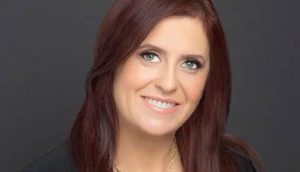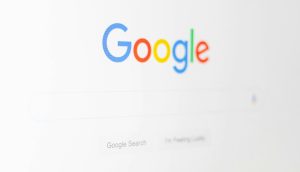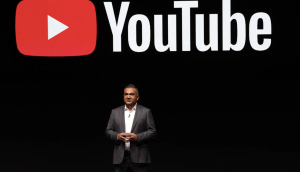As one of the founding partners of Montreal-based Cossette Communication Group, the architect of Cossette Media, and creator of Impact Research, Pierre Delagrave has helped keep the agency on the leading edge of the industry by understanding and taking charge of change rather than simply reacting to it. In 1994 when his research showed how rapidly consumers were adopting the Internet and new technologies, Cossette Interactive – now Fjord Interactive Marketing + Technology – was born. Ten years into the Internet revolution, Delagrave was doing some informal research within the agency on the ownership and use of PVRs and found that the 5% to 8% of employees that already had PVRs, recorded and watched the programs they liked – and skipped the ads. Once again the alarm bells went off but he realized to find new ways to reach consumers, the agency must first understand the changes taking place and what to expect of the future. One of the outcomes of the quest is his book, Erase Everything and Start Over! PVRs, Blogs, and Word of Mouth: The consumer is now in control.
He explains, ‘The objective of the book – for our people, clients, and Cossette – is there is a big job ahead. It will take some time to find the answer to the change that’s happening. We should increase the speed of thinking. We’re not going to find the solution right away but we need to start to look at solutions – and it does affect everybody. That’s my prediction and I hope I will convince people.’
MIC spoke with Delagrave to discuss his thoughts on the impact of new technologies on media consumption, and what it means to marketers and their agencies.
MIC: How has technology changed consumer behaviour?
Probably the most surprising thing is the ‘egocasting’ reaction of the consumer. They have been offered the opportunity to show their pictures, share their thoughts, or their opinions on products – and they’re doing it. I’m surprised that so many people are not shy about sharing personal things (on the Internet).
MIC: What impact has all of the technology had on media consumption?
It’s the capacity to digest or be exposed to so many things at the same time – the clicking, the short span of attention. You have a one-second chance to present yourself almost everywhere. Especially with broadcast where (advertising) is a disruption of their entertainment. (Consumers) are the generator of media – choosing whatever they want, whenever they want. Sometimes if they don’t have the choice, they have multiple media on at the same time. And now we’re talking about hundreds of channels or millions of sites. They have the choice, so they choose, and they are very difficult to reach.
MIC: What do the changes mean to marketers trying to reach those consumers?
For marketers, the introduction of a product is the key. If it’s not well done it can kill the product. In the book I talk about the real importance of understanding who is going to be the innovator or early adopter of your product and – especially today with the segmentation possibilities – to try to reach those people first. There is a tendency to take a mass approach, because it was previously the channel to reach the most right away.
For example, iPod has existed for more than five years. Its campaign started about three years ago and last year everybody was talking about iPod. When 1% of the population had iPods, (brand communication) was mostly PR or magazine or word-of-mouth – directed to a very small group of people. Marketers should recognize that the opinion leader-influencer is a key element to the development of a product. Where it is in its life cycle should determine the appropriate (communication) channel for the product.
MIC: What impact will this have on advertising with traditional media such as television?
In a couple of years we will be hurt in a big way because with PVRs people tape their most precious programs – especially light TV viewers – and they watch those, plus news and sports, and that’s all. Those programs cost four or five times more than daytime television, so the economy of the top shows will be destroyed. I will not buy those programs unless something changes.
MIC: What will that mean to broadcasters?
Private stations will not be able to finance those programs. In fact, Quebecor decided not to renew many (programs for fall). They are moving to a new era where they will generate revenue from VOD, which is free now, but will need to be paid in one way or another in the future. A lot of people at the moment are watching those top shows free on Ilico (interactive television). I think we should be looking at an advertising solution in this area to reach those people.
MIC: Are there some solutions to keep TV an effective ad medium?
Sponsorship, I think, will be one of the ways and product placement, but generally speaking, we need to question the way top shows are sold on cost-per-GRP, as well as the number of spots in those shows and frequency of the spots. (In Quebec) the same advertiser could have the same spots run every 15 minutes. In the future, if you continue that weight it will kill those top shows because I really believe people like advertising, good advertising – but they don’t like repetitive advertising. They could like two-minute spots and they could like five-second TV spots. So the format, fresh ads, different ways to present them, the 12-minutes (of ads) per hour – all of those things need to be questioned.
Sometimes there are things that TV can do that other media can’t. We need to spend the time to find solutions.
MIC: Is there any good news for advertisers?
I was at a seminar in San Francisco and there was some research that said 68% of the people are ready to consume advertising coming with content and 17% are ready to pay (not to have advertising). Four times more people are ready to accept advertising. Especially young people, they don’t want to have to pay. So the good thing is, the media choice will change but it will still be possible to reach them, but in a different way.
MIC: What are some of the new tactics for reaching consumers and how can agencies prove their effectiveness to clients?
One of the models is search marketing, which is based on improvement of the cost-per-click. And surely in the future we are going to work on engagement. Sponsorship – event sponsorship – has been a good case this past 10 years where you have a kiosk, a promotion, anything to engage people. Now it is going happen throughout the technology offered, and other ways to engage people, because you need to count the people who see (the message) and who will react to it.
You need to create word-of-mouth. Not only does it have to be done well creatively, you need to create a reaction. When you look at viral marketing, it’s very difficult to do. You need to know what to do and when to send it. Because the Internet is used a lot personally at work, at 11am or 3:30 in the afternoon people are ‘Bored at Work’, so it’s a good time to send viral marketing because within a couple of minutes, people are sending it everywhere to their friends.
MIC: How can agencies adjust to the changes?
For media people, I’m asking that they spend half of their time understanding the consumer and who they are targeting because the media target could be different than the creative target. They need to be ready to be excited by the new changes. Ultimately the creativity on those things, the tone is different. For example, the authenticity of anything you can find on iPod is more important than the very high-end quality of (the communication). The creative guy who only wants to create 30-second commercials probably will have to find a job if he doesn’t consider all the possibilities of a convergent, or media-neutral campaign. Following a crisis, you have adaptation, and at the same time on the agency side, the people who are staying with the old work, they have two years to change – and then they will suffer or have to merge with another company that has understood where it’s all heading.























